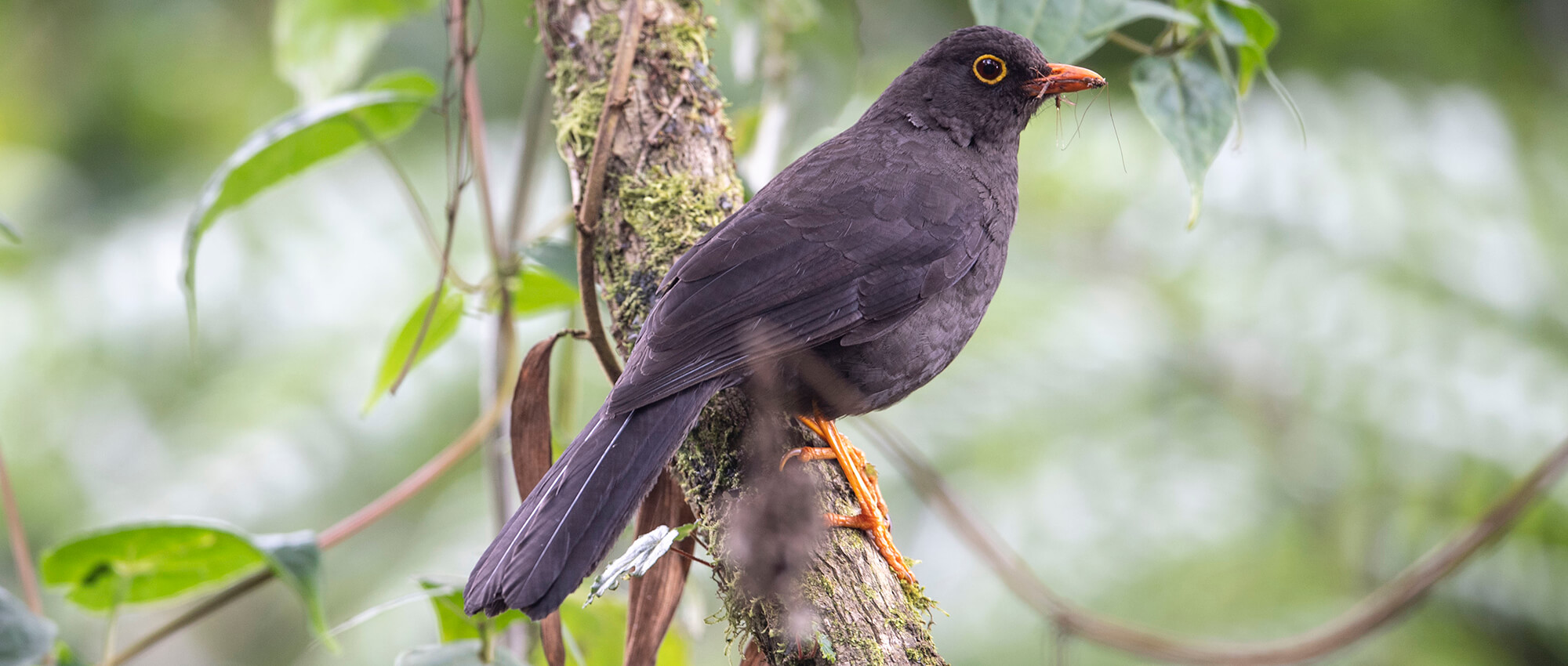
Great Thrush is found at high elevations
la Mirla Patiamarilla se encuentra en los pÁramos
Turdus fuscater
The Great Thrush measures from 28 to 33 cm (11-13 in) in length and a mass of 125 to 175 g (4.4-6.7 oz). They are distributed in altitudes from 1800 to 4000 m (5900 - 13000 ft). Inhabits clear zones near edges of humid forests but do not tolerate dry environments. It is also found in cold areas perching low in trees and fences. It is also found in urban areas in parks, backyards and also in farmland. It can be easily distinguished by its yellow tarsi (legs), yellow bill, and yellow ring around the eye. The iris is reddish-brown. The yellow ring is only present in the male otherwise both male and female do not have sexual dimorphism as they are very similar in traits. This thrush has a dark olive brown plumage with a distinctive long tail. The plumage is black-brown, darker on wings and tail, and pale on the abdominal region. Crown is somehow darker. Throat present pale gray with dark streaks. It is conspicuous and solitary. It feeds on seed fruit, insects, earthworms, spiders, and other invertebrates. For protein source, this thrush preys on mice, lizards, frogs, and small snakes. The nest is cup-shaped and made of plant material lined with thin plant fibers and some mud. The size of the clutch is 2 blue-greenish eggs with dark brown spots. It sings soft and melodious songs only during breeding.
La Mirla Patiamarilla mide alrededor de 28 a 33 cm de longitud y de un peso entre 125 to 175 g. Se encuentran entre los 1800 y 4000 m de altura. Habita en las orillas de bosques y en áreas despejadas, cultivos, rastrojos y demás sitios de clima frío. Se mantiene en las partes bajas de los árboles y en cercas. Evita los ambientes secos y áreas densas forestales. Se las identifica fácilmente por el pico y patas anaranjadas. Su cola es larga. De ojos café-rojizos y un anillo ocular amarillo solo evidente en los machos. De resto el macho es similar a la hembra. Su parte superior es de gris oscuro a marrón grisáceo. Su cabeza es negruzca. Su parte inferior es oliva grisáceo pero su garganta es pálida. La parte central del pecho y abdomen de tonos amarillo pálido a blanco. La coronilla, los lados de la cabeza y barbilla tienen plumas negras. Ave conspicua, territorial y de hábito sedentario. Consume semilla, fruta, insectos, lombrices de tierra y arañas. Además su fuente de proteina la obtiene de pequeños animales como ratones, lagartijas, ranas y serpientes. Nido en forma de taza construida con fibras vegetales y un poco de barro. Su postura consiste de 2 huevos color verde azulado con manchas café oscuro. Tiene varios cantos suaves y melodiosos que solo emite durante la época de reproducción.
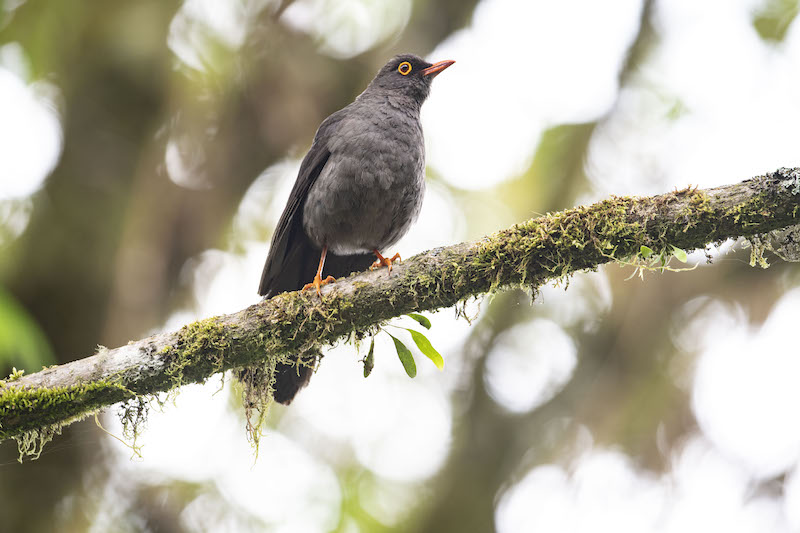
MAT_1981
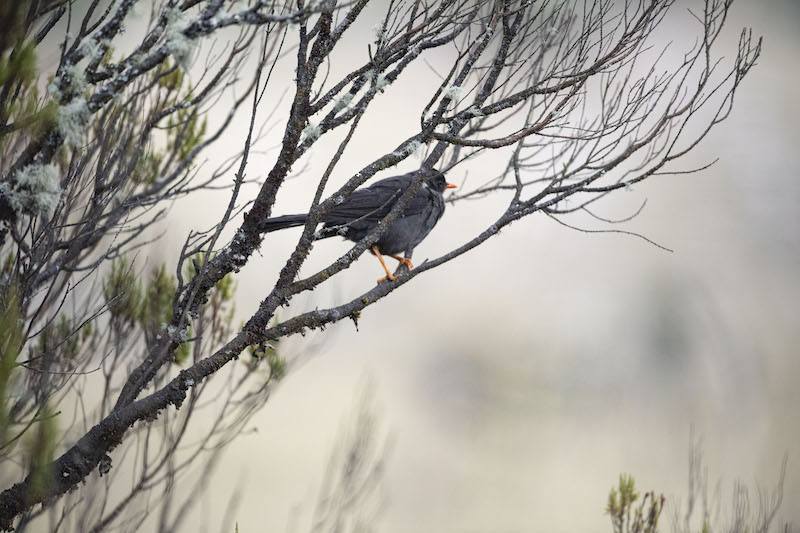
MAT_1407

MAT-1970
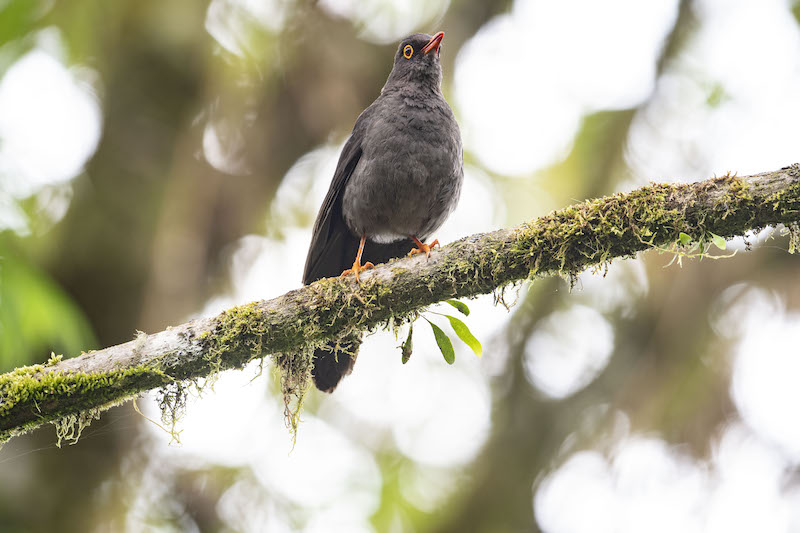
MAT_1980

MAT_1410
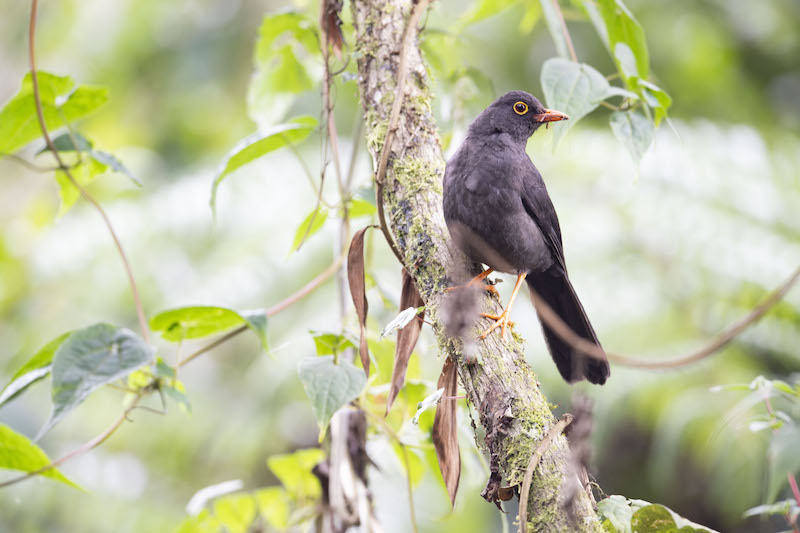
MAT_1967

MAT_1481
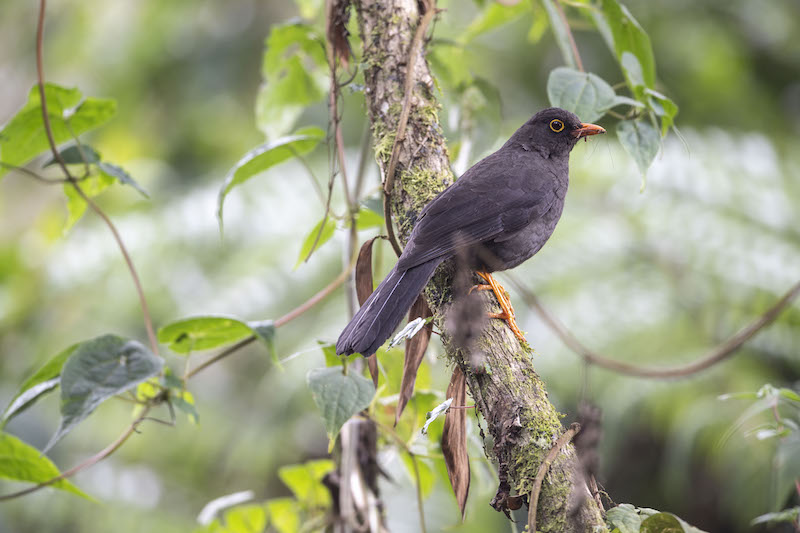
MAT_1971

MAT_1415
